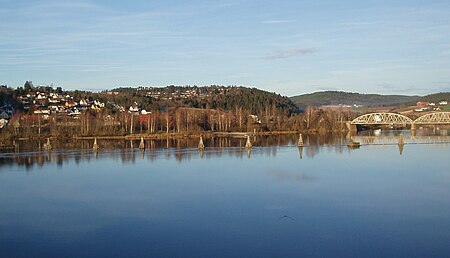Fet, Norway
Commons category link is locally definedLillestrømPages with non-numeric formatnum arguments

Fet was a municipality in Akershus county, Norway. It was part of the Romerike traditional region. The administrative centre of the municipality is the village of Fetsund. Fet was established as a municipality on 1 January 1838 (see formannskapsdistrikt). The new municipality of Rælingen was separated from Fet on 1 July 1929. The part of Enebakk municipality lying east of lake Øyeren was transferred to Fet in 1962. On 1 January 2020 Fet was merged with Skedsmo and Sørum municipalities to form Lillestrøm municipality.
Excerpt from the Wikipedia article Fet, Norway (License: CC BY-SA 3.0, Authors, Images).Fet, Norway
Fetveien, Lillestrøm
Geographical coordinates (GPS) Address Nearby Places Show on map
Geographical coordinates (GPS)
| Latitude | Longitude |
|---|---|
| N 59.879722222222 ° | E 11.220555555556 ° |
Address
Fetveien
Fetveien
1903 Lillestrøm
Norway
Open on Google Maps







